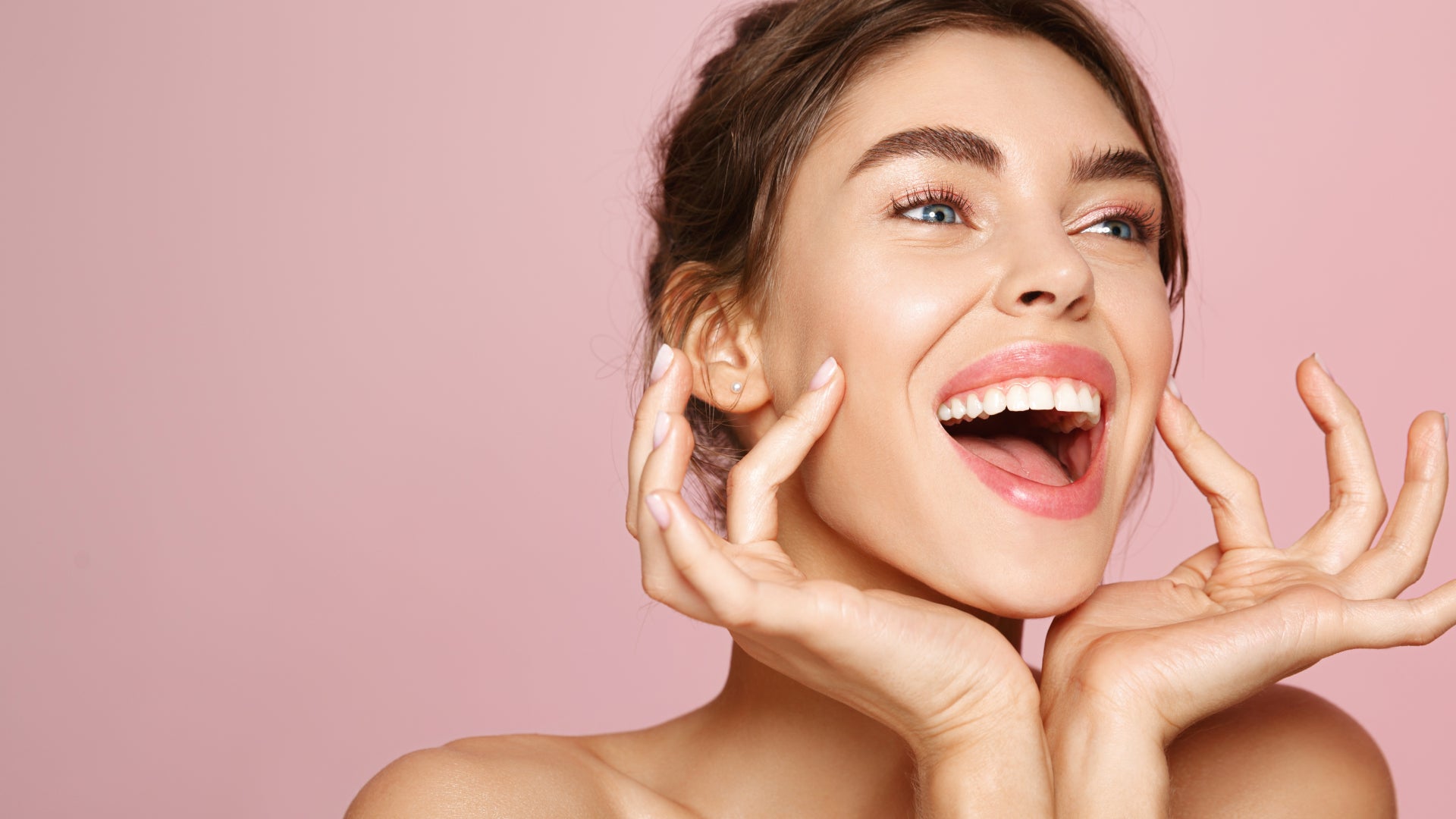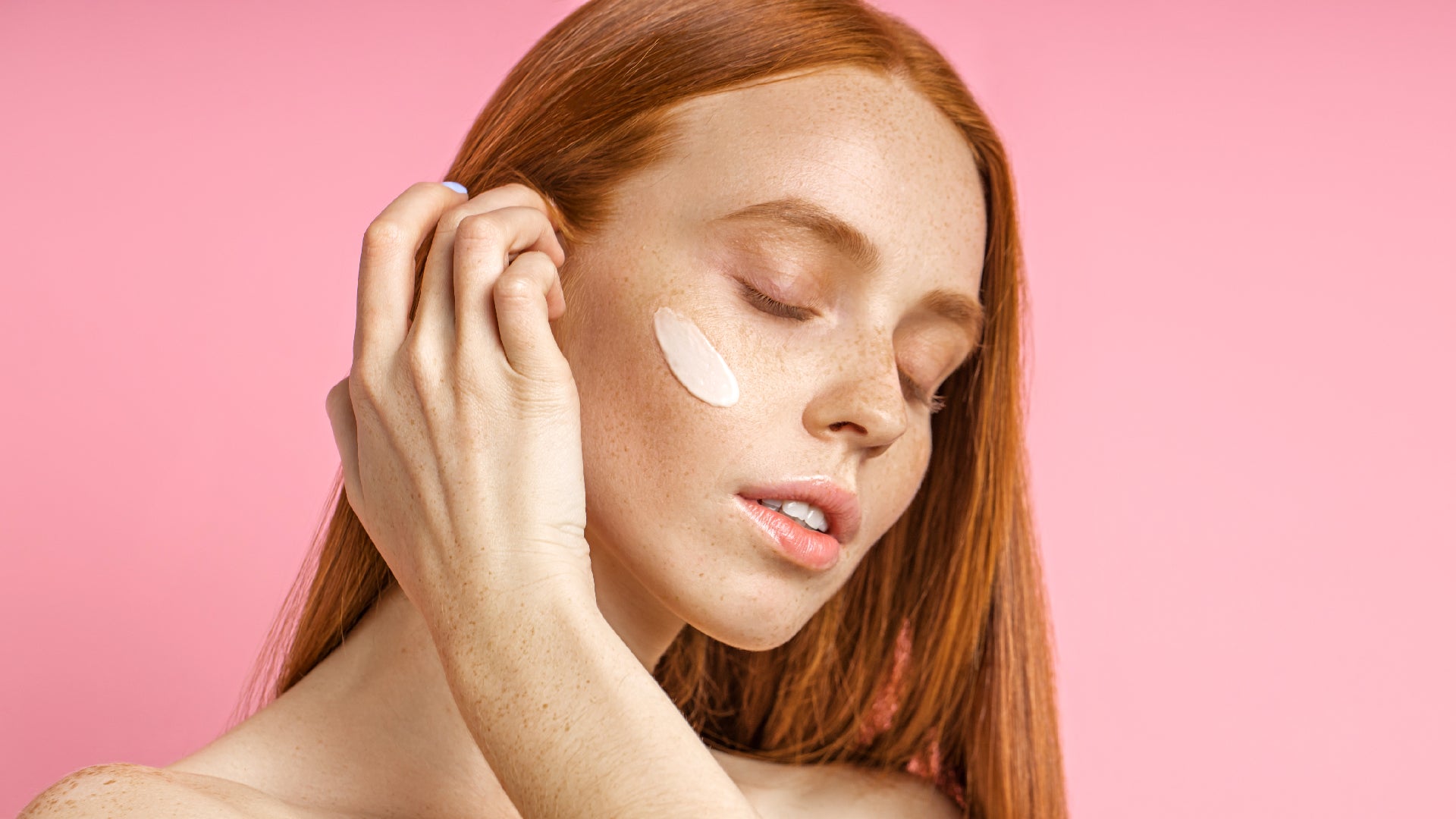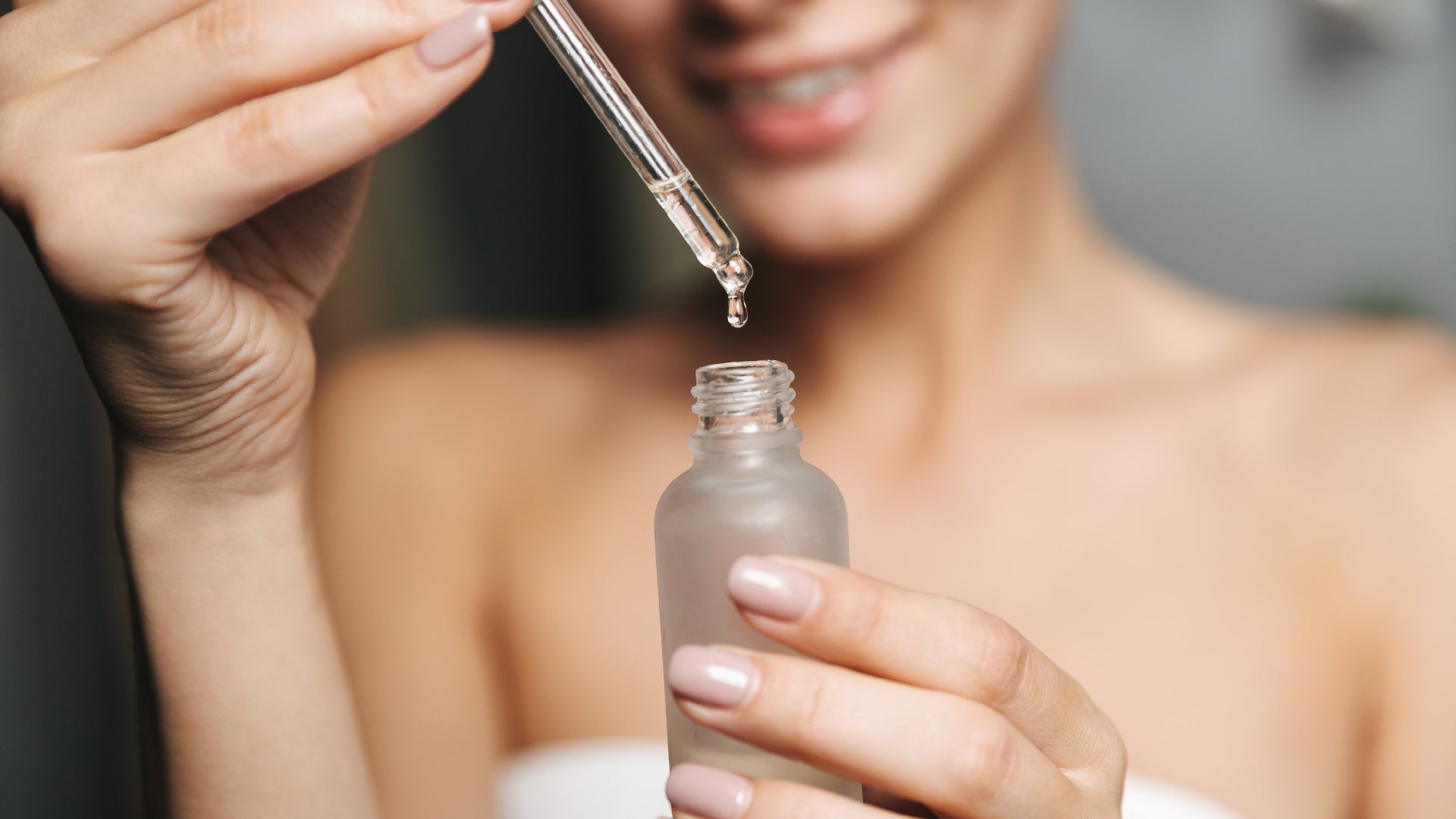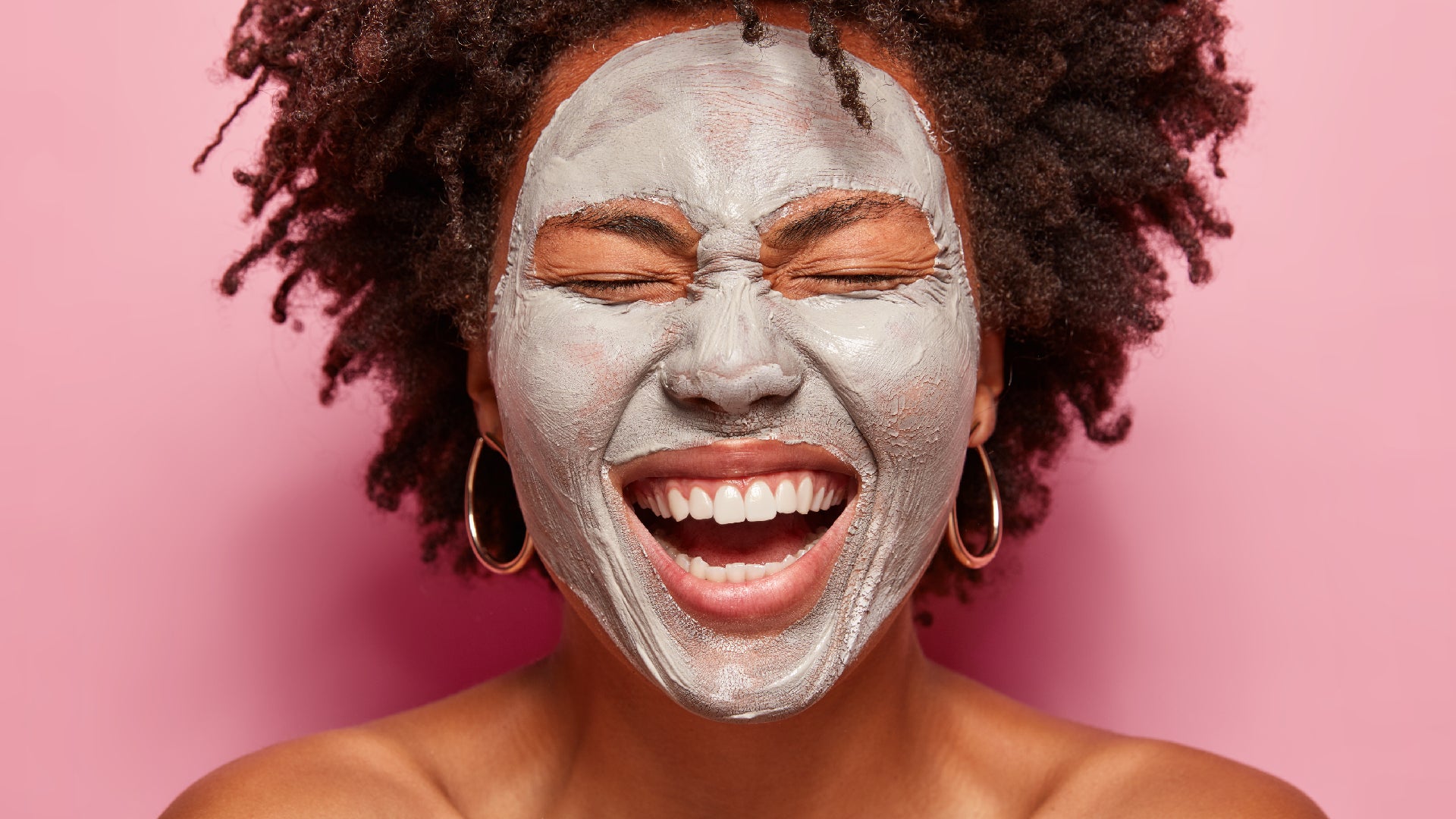
True Radical Honesty From Our Community
What To Do If You Hate Those Fine Lines Around Your Lips
Read MoreAdvice for all of your skin care needs
- all articles
- Acne
- Anti-Aging
- Collagen
- Combination Skin
- Company Announcements
- dry skin
- Exfoliation
- Eye Care
- Facial Redness
- Grooming
- Holidays
- Hyaluronic Acid
- Niacinamide
- Oily Skin
- Retinol
- Sensitive Skin
- Skincare
- Skincare Guide
- Skincare ingredients
- Skincare Routine
- Skincare Tips
- Sun Protection
- Toner
- Vegan Skincare
- Vitamin C
- view all
- Acne
- Anti-Aging
- Collagen
- Combination Skin
- Company Announcements
- dry skin
- Exfoliation
- Eye Care
- Facial Redness
- Grooming
- Holidays
- Hyaluronic Acid
- Niacinamide
- Oily Skin
- Retinol
- Sensitive Skin
- Skincare
- Skincare Guide
- Skincare ingredients
- Skincare Routine
- Skincare Tips
- Sun Protection
- Toner
- Vegan Skincare
- Vitamin C
-
Collagen is one of, if not the most important building blocks of your skin. But what’s the deal with collagen loss and can skincare really help put back what’s gone? Here’s everything we know…
If you’re here, you’re probably semi-interested in your skin and how it works. And if that’s the case you’ll know a little bit about collagen and the role it plays in the overall health of your skin. Hint: it’s a LOT.
But how much do you really know about collagen? Like, what happens as you age? And what collagen in skincare truthfully means?
Interested to up your collagen knowledge (ooh, try saying that three times in a row after a few pinots!)? Then read on for the full intel…
What Is Collagen?
Collagen is the most abundant protein in the whole of your body and it’s made up of a combination of amino acids. While there are many different types of collagen, there are only four main variants, and of these, just one (type I) accounts for a whopping 90 percent of your body’s collagen levels.
Collagen is found in the body’s connective tissues and it has a kind of dense, fiber-like structure which acts like ‘glue’ to make these tissues strong, supple and resilient. You’ll find collagen in your bones, muscles, teeth and blood, but it’s most prevalent in your skin where it’s produced just beneath the surface in the dermis.
How Does Aging Affect Collagen?
When you’re young, your skin is awash with lots of delicious collagen which keeps it soft, strong, plump and wrinkle-free. However, once you hit your 20s, you start to produce around 1-1.5 percent less collagen every year. This is what’s known as intrinsic aging and it’s what causes the inevitable thinning and weakening of your skin you literally have no control over.
Of course, there are plenty of other factors at play here, too. Your lifestyle, your diet, how much sleep you get and your levels of stress all work to deplete collagen in your skin. Then, there’s the environmental stuff like pollution and UV damage that cause collagen-damaging free radicals. All this you can control and it’s what’s known in the biz as extrinsic aging.
So, Can You Slow Down The Rate At Which Your Skin Loses Collagen?
Yes and no. Intrinsic aging is a done deal and unless you’ve invented some kind of Back To The Future style DeLorean, you can’t alter time. But you can control all the other factors. The sun is the biggest player and responsible for around 80 percent of extrinsic aging, so you must protect your skin from UV damage every day by applying an antioxidant like Vitamin C Facial Serum followed by sunscreen with broad-spectrum coverage.
Getting a great night’s sleep, not smoking and reducing emotional stress are also super important. And so is your diet. Sugar and refined carbs can really screw up collagen synthesis so try to avoid these. Instead, up your intake of antioxidant-rich fruit and veggies and ensure you get plenty of protein as this helps your body produce more quality collagen in order to maintain firmer, younger-looking skin.
Meat, poultry, seafood, dairy, beans and tofu are real BFFs for quality collagen production.
What’s The Deal With Collagen In Skincare?
Experts are divided as to whether applying skincare containing collagen really works. The issue is that collagen is a large, very complex molecule making it pretty hard to penetrate the skin when applied topically. Hydrolyzed collagen (which is collagen that’s been broken down into peptides) may absorb more easily, but the jury’s still out.
If you're not convinced, stick with skincare ingredients that work to increase your own rate of collagen production, rather than to apply topical, synthetic collagen. Ingredients like retinol, MSM and vitamin C have all been studied and proven to stimulate your skin’s natural collagen production and inhibit its breakdown. Retinol, in particular, has been used for decades and has an awesome track record when it comes to upping your collagen levels.
Try Retinol Facial Serum or Vitamin C Super Serum +. And of course, don’t forget that super important sun protection to reduce the formation of free radicals in your skin and consequently decrease your risk of collagen damage.
Finally, What About Collagen Drinks & Supplements?
There's not a huge amount of evidence to support whether collagen shots or supplements can realistically make your lines and wrinkles disappear. Some research papers point to them having definite potential, but other experts believe that by the time the collagen has been ingested, digested and made its way into your bloodstream its potency and quantity could be somewhat lacking.
Again, hydrolyzed collagen supplements seem to have potential as studies show these to be more easily absorbed by your body.
Our advice for maintaining quality collagen for as long as you possibly can? Go for a healthy diet, use daily sun protection and apply antioxidants and retinol on the reg.
The Truth About Collagen
read more -
Not that we’re dissing retinol. It’s just that it’s not the ONLY skincare ingredient out there worth a place in your daily regime…
Don’t get us wrong, retinol gives us all the feels and we’re mad about its cunning ability to improve everything from wrinkles and dark spots to acne and sagging skin. But it’s pretty potent stuff, so not everyone’s skin can get away with using it on the reg. Also, it’s not the be-all and end-all. In fact there are plenty of other trusted skincare ingredients that offer awesome anti-aging benefits for no-so-youthful-looking skin.
Of course, any brand promising you miracles like a ‘face lift in a bottle’ is lying to you – no matter what kind of clinically-proven wonder-potions are packed inside. But if you keep at it, and give skincare time to work, certain ingredients are guaranteed to offer real, skin-changing results.
Here are our top five…
1. Exfoliating Acids
According to the Mayo Clinic, exfoliating acids like AHAs (alpha hydroxy acids), BHAs (beta hydroxy acids) and PHAs (poly hydroxy acids) are among the most effective ingredients for reducing the visible signs of aging. Unlike manual exfoliators like scrubs, loofahs and face cloths that require some kind of physical movement to work, exfoliating acids dissolve the bonds between dead skin cells to encourage them to get a move on and fall away from the surface of your skin. This process accelerates cellular turnover and works to brighten, smooth and even out your entire complexion. It also helps prepare your skin to better absorb and reap the benefits of the rest of your skincare routine.
You’ll find exfoliating acids in various forms across anything from cleansers to serums, the most common of which are glycolic, lactic, gluconic and salicylic acids. We formulate salicylic acid into our Vitamin C Super Serum+ which is a great choice for aging skin. Always patch test first, then apply it to clean, dry skin before moisturizing.
2. Niacinamide
A form of vitamin B3, niacinamide is a very effective antioxidant that’s been gaining popularity as a skincare ingredient in recent years. And it’s about time, too.
Not a blog post goes by in which we don’t talk about antioxidants, yet here we go again –sorry, not sorry. Antioxidants are up there as some of the most important things to include in your skincare regime. Granted, cleanser, moisturizer and sunscreen are THE most important products for maintaining healthy skin, but if you care about defying lines, wrinkles and so on, antioxidants are everything. How so? Because they protect your skin from free radicals which are unstable oxygen molecules that wreak havoc on your skin when it’s exposed to things like UV radiation and environmental pollution.
Niacinamide is very well tolerated by the skin which makes it a great choice for sensitive skin. Research also shows that it increases the production of ceramides in the top layers of your skin which improves your barrier function, increases moisturization and helps reduce the appearance of fine lines and wrinkles. It also reduces inflammation, diminishes discoloration, fights breakouts and balances sebum. Is there anything niacinamide can’t do? For sure, but who needs a facial serum to walk the dog?
Try our awesome Niacinamide Facial Serum which blends this potent but skin-friendly antioxidant with healing vitamin E and hydrating hyaluronic acid.
3. MSM
Often overshadowed by the big guns, MSM is 100 percent worth a place in your skincare routine. And here’s why. Otherwise known as methylsulfonylmethane (agreed, a real mouthful), MSM is a sulfur compound which primarily contains sulfur, as well as small amounts of carbon, hydrogen and oxygen. Sulfur is extremely plentiful in the human body and found mainly in your skin and bones. It’s often known as the ‘healing mineral’ due to its ability to support healthy collagen synthesis, boost circulation, reduce inflammation and detoxify. Impressive stuff, right?
As a topical ingredient, MSM has been proven to not only increase collagen production, but to also reduce environmental damage by increasing your levels of glutathione. Glutathione is one of your body’s most important, naturally-occurring antioxidants, helping to fight oxidative stress caused by those devils called free radicals. We hate free radicals. You should hate free radicals, too.
You’ll find MSM in a bunch of your favorite TruSkin products including our Hyaluronic Eye Cream.
4. Peptides
Peptides can be tricky to get your head around, but simply put they’re chemical compounds made up of amino acids. Now, if you paid attention in 7th grade biology you’ll remember that amino acids combine to form proteins and are pretty much the building blocks of the human body, aiding in important functions like growth and repair. Well, while proteins are made up of long chains of amino acids, peptides are the little guys, made up of shorter chains.
In skincare, certain peptides act like little messengers to encourage your cells to produce more proteins – namely collagen, elastin and keratin – and simultaneously improve your skin’s texture and tone. They can work on fine lines, wrinkles, dark spots, even breakouts. But only if you choose the right ones…
One of the most effective peptides to look out for is Matrixyl 3000 which is thought to be able to almost double the amount of collagen your cells produce. Impressed? Much? Then you have to try our Peptide Eye Gel and Ocean Minerals Super Toner which both contain the mighty Matrixyl 3000 as well as plenty of other skin-loving and anti-aging ingredients.
5. Vitamin C
Another, dare we say it, powerful antioxidant, vitamin C is so good, we like to tout its abilities on an almost weekly basis! But it’s so much more than a free radical-fighting powerhouse. It’s literally ‘the’ ingredient for boosting radiance and diminishing dark spots.
So, how does that work? Well, studies have shown that it reduces the amount of melanin your skin produces by inhibiting tyrosinase (a catalyst for melanin production). By hampering melanin, vitamin C works hard to fade existing dark spots, help stop new ones from forming and give you a more glowy complexion. Oh, vitamin C also promotes cellular turnover and collagen production as a couple of extra bonuses.
Topical vitamin C takes on many forms, most commonly l-ascorbic acid and sodium ascorbyl phosphate (SAP). L-ascorbic acid is the pure form but it’s notoriously unstable meaning it breaks down easily, therefore becoming less effective. It can also be a little potent for sensitive skin so, instead, we use SAP across all of our C-products because it’s way gentler on the skin, still super effective and maintains its stability for much longer. SAP is the salt version of pure vitamin C which is why our infamous Vitamin C Facial Serum looks a little cloudy.
So, now you know!
Why Retinol Isn’t The Only Answer To Aging Skin
read more -
Feel like you might be overloading and stressing out your skin? Then the best ways to get results from your skincare is to go low and slow. Say hello to skincare microdosing...
Many skincare fads come and go and oftentimes they’re not worth the time of day (here’s looking at you ‘slugging’). But every now and again, something crops up that actually does your skin the world of good.
One such thing is microdosing. To be honest, skincare microdosing isn’t a new phenomenon, but something we’ve advocated forever – it’s simply been given a name. So, what does it mean? Simple: it’s the process of using lower concentrations of active ingredients in your routine, so as not to irritate your skin with potent skin-changers like retinol, vitamin C and exfoliating acids like glycolic and salicylic. These kind of active ingredients are extremely effective on the skin, but they can be a little too effective and intimidating for some folks, causing no end of problems like unwanted redness, dryness or irritation.
Even if you don’t have sensitive skin, your skin can only take so much before it will start freaking out and reacting to this bombardment of ingredients. Take exfoliating acids, for example. Use these in high strengths every day and you skin’s natural renewal system simply won’t be able to keep up, risking flaking, peeling, redness and dryness. Continue on this ‘no pain, no gain’ road and you could even risk longer-term damage such as dermatitis and sun damage.
Applying such ingredients in smaller doses, however, is a much better way to treat your skin with respect. It’s all about paring back your regime to avoid overloading your skin with a complicated cocktail of powerful ingredients and products. This gives your skin time to accept and better tolerate these potent, active ingredients, allowing you to safely use retinol and friends more regularly while avoiding damage to your skin’s all-important barrier function.
Your skin’s barrier is the absolute foundation to a healthy complexion. This is the very top layer (the stratum corneum) which works hard to defend your skin from environmental toxins and damage, while simultaneously retaining water to keep it soft, supple and well moisturized. If you upset your barrier with a super harsh skincare routine, beware because it will thank you with dryness, redness, breakouts, itching, inflammation, sensitivities and no end of other problems. So, you gotta treat it with respect. This means gentle cleansing, no hot water, exfoliating with care and never overloading it with too many active ingredients, lotions and potions – aka microdosing.
The 3 Rules Of Skincare Microdosing
Is your skin feeling overwhelmed by an over-zealous daily routine right now? Then here’s how to cut back and nail this microdosing malarkey…
1. Refine Your Skincare Regime
Microdosing traditionally takes on the form of using low rather than high concentrations of active ingredients. This means you don’t need to waste time hunting down the latest, super potent anti-aging serum that promises a massive hit of 5 percent retinol. Instead, look for products that contain smaller amounts (even 0.1 percent of retinol can offer great benefits).
A great trick here is to try a moisturizer instead of a serum. Moisturizers usually contain less active ingredients and don’t penetrate your skin as deeply as serums, meaning they’re kinder to sensitive skin. Try our Retinol Moisturizer for a gentle hit of retinol with much less chances of causing irritation.
You could also think about swapping out some potent ingredients for their gentler alternatives. Pure vitamin C, for example, is known as l-ascorbic acid and, while this provides awesome brightening and antioxidant protection for your skin, l-ascorbic acid is extremely powerful and can irritate some skin types. Instead, we use a vitamin C derivative called sodium ascorbyl phosphate in our Vitamin C Facial Serum and, in fact, across all of our C products. Sodium ascorbyl phosphate is way kinder to your skin and much safer to use daily as long as your skin can tolerate it. Not sure it can? Then carry out a patch test first. In fact, even if you think your skin will be OK, it’s always prudent to patch test, just in case.
Other ways to successfully microdose? Pare down your routine to just the essentials you know are good for your skin. The three absolute musts are cleanser, moisturizer and sunscreen, then you can add in one or two treatments, an eye cream and you should be golden.
Finally, always use your products as directed and never apply too much – this is literally the opposite of what microdosing is trying to achieve! For help on how much product you need, check out our handy guide, right here.
2. Be Patient
Of course, there has to be a trade-off from using lower concentrations of active ingredients rather than going for the heavy-hitters. And this is, it will take a little longer for your products to show visible results.
But come on now, if you’re noticing some skin sensitivities, waiting a few extra weeks (around six to eight is probably the sweet spot) will be so worth it in the long-run. And hey, if your skin adapts to ingredients pretty swiftly, you can always up your dosage accordingly. It’s all about listening to your skin.
3. NEVER Microdose SPF
If there’s one product you should never scrimp on, it’s sunscreen. Too much of a good thing simply does not apply here. According to the American Academy of Dermatology (AAD) you should apply a sun protection with at least SPF 30 to your face every morning to block a good 97 percent of the sun’s UVB rays. You must also look for broad-spectrum formulations that offer UVA as well as UVB protection. UVA rays are the ones that age you up (think A for aging), while UVB rays are responsible for burning (B for burning). And they can both lead to skin cancer, so it’s vital to protect your skin from the works.
Apply your sunscreen generously (again, no microdosing, please) and don’t give up in winter. The sun can damage your skin just a much when the weather’s lousy as when the sun is at its best. End of discussion.
Skincare Microdosing: What’s That All About?
read more -
Because breakouts are best dealt with over time with a combination of awesome skincare, healthy lifestyle choices and smart, professional treatments.
Did you know, around 40 to 50 million Americans have mild to severe acne? So, next time you look in the mirror and wonder ‘why me?’ just remember, you’re totally normal and not alone.
That being said, a positive mental attitude won’t magically banish your breakouts. Sure, confidence and self-assurance are everything and we’re big advocates of loving the skin you’re in… but if you’re serious about maintaining a clear, glowing complexion, you’re going to need more than good vibes alone.
You see, taking care of acne-prone skin is all about the long game. Shoving toothpaste on your zit the night before a big event might help, but it could also irritate and dry out your skin. Similarly picking and squeezing a custard-filled pimple the morning of a dinner date/holiday party/lunch with the girls will get rid of that pus, for sure, but it will also increase redness and inflammation, making your pimple hang around longer and possibly scar. Not cool.
So, instead, of freaking out about our acne spots and hitting the quick fix button – which invariably won’t work anyway – start a long-term plan right now with effective skincare and a little acne knowhow.
Below, our favorite long-term solutions for dealing with breakouts…
Fight Acne From Different Angles
According to the American Academy of Dermatology (AAD), one of the best ways to fight acne is to use different ingredients in your products to work on the different causes. Acne occurs when your pores gets clogged and inflamed thanks to a build-up of oils, dirt and bacteria. So, think about tailoring your skincare routine around these dealing with these little nasties.
Retinol, for example, works hard to reduce oiliness and improve cell turnover, while salicylic acid helps keep your pores clean and clear by accelerating the natural shedding of dead skin cells. Benzoyl peroxide, on the other hand, kills bacteria, while tea tree oil reduces inflammation and boosts healing.
Of course, we’d never suggest you throw all of these ingredients at your skin at once because overloading it with too many actives could worsen your acne and cause irritation. However, you could alternate between Retinol Facial Serum and a salicylic acid treatment, or you could try our awesome Tea Tree Serum two or three times a week. This facial serum combines a balanced blend of tea tree oil, salicylic acid and retinol to work on acne from all angles and offer a real improvement in acne-prone skin.
Give Your Skincare Regime Time To Work
Heads up, people: skincare products containing active ingredients that work on a deep cellular level do not work overnight. Far from it. In fact, they need at least four weeks to work to their best ability. And the reason for this is all down to the life cycle of the skin.
As you know, your skin is constantly regenerating itself, producing new cells within the deepest layers of your epidermis which mature as they work their way up to the surface where they die and shed. Well, this cycle takes around 28 days in an average adult – NOT that you’re average, of course;). Consequently, any product that changes the biological functioning of your skin will need at least the same amount of time (four weeks) to take effect and work on every cell that’s reached the surface.
Patience. It’s a virtue.
Avoid Pore-Clogging Skincare Products
Hiding your face behind heavy, pore-clogging makeup will undo all the hard work of an awesome skincare regime. So, don’t do that. Your best bet is to leave your skin free of makeup but if you hate facing the world without a little something, make sure all your products are oil-free, non-acnegenic and/or non-comedogenic. Non-comedogenic means a product has been formulated to be less likely to cause blocked pores (comedones). Note the words ‘less likely,’ however. This is not a guarantee they hands down won’t block your pores. But it’s a good start. Ingredients to avoid include things like cocoa butter, isopropyl myristate, soybean oil and lanolin acid.
Be A Clean Freak
Keeping your skin clean is really important so make sure you cleanse every morning, every night and always after exercising. Don’t rub too vigorously at your skin, however, and avoid products that could dry out your skin. Our Charcoal Clarifying Cleanser has been specifically formulated with activated coconut charcoal to gently draw pore-clogging debris from your skin to detoxify and help control acne. It also contains aloe, glycerin and essential oils to heal, hydrate and nourish your skin without blocking your pores or causing irritation.
Equally, anything that touches your skin must also be kept clean. Think pillowcases, face towels, your smartphone and especially your hands. Wash them all thoroughly and often.
Try Light Therapy
Fancy trying something at the derm’s office? Then ask your dermatologist about LED Light Therapy – especially if your regular skincare regime doesn’t seem to be doing the job. It works by emitting light deep into the skin and can be a very effective, non-invasive treatment to try. A combination of blue and red light is often used to treat acne because blue light kills bacteria while red light activates collagen production to promote healing and rejuvenation.
A series of multiple treatments is advised for the best results and of course, these results vary from person to person, so don’t expect miracles. Speak to your dermatologist first so they can give you an indication of what to expect. Who knows, they may even advise chemical peels or extraction as better options for your particular concerns? And remember, most professional treatments work better when combined with great, at-home skincare so don’t give up your salicylic acid and/or retinol regime.
Severe Acne? Ask Your Doctor For Help
If you feel like you’ve tried everything, ask your doctor about prescription-strength oral or topical medications. Anything from stronger retinoids and antiobiotics to oral contraceptives and steroid injections have been proven to help clear up even the most severe cases of acne. The options are almost endless, so don't lose hope, people – there's bound to be something out there for you.
Long-Term Acne Solutions That Get The Job Done
read more -
Because now is the best time to plan for party-ready skin. Panicking the night before a big event? Asking for trouble…
We know it’s only November, but Thanksgiving is imminent and December is officially party time. And to be honest, last-minute skincare miracles are all well and good, but when you go into panic mode and overload your skin with lasers, peels, scrubs and potent skincare all at once your skin will repay you not by looking glowing and gorgeous, but with the exact opposite – redness, rawness, inflammation and irritation. Now, we don’t like to be presumptuous, but we don’t reckon any of those are high on your party skin wish list. Are we right or are we right?
So, if your skin is feeling a bit drab right now, a long-term party prep regime is exactly what you need to set your skin up for success. And don’t worry, you don’t need to spend hours preening your face every morning and every night. Just a few extra minutes here and there will make the world of difference. Then when those invites start pouring in, you will be 100 percent ready.
Now, let’s get started, shall we? The countdown is on…
Party Skin Prep Tip #1: Get Your Daily Fix Of Vitamin C
You might have noticed we’re major fans of vitamin C. Our whole brand was born from our Vitamin C Facial Serum and since its launch in 2013 it’s grown to be America’s highest-rated serum with over 50,000 five-star reviews on Amazon (and counting!). Not that we like to brag, but… OK, we do, just a little bit.
One of the most important ingredients for strong, radiant, healthy skin, vitamin C is an absolute must in the run up to the party season. Not on board yet? Then now’s the time to start reaping its countless benefits (which you can read about right here). Do a patch test first (so important!), then apply your serum to dry, clean skin before moisturizing for the best results. This is so all those active ingredients can get straight into your skin, exactly where it’s needed, rather than sitting on top of your moisturizer, fighting to get through.
We recommend applying our Vitamin C Facial Serum every day for the best results. If you’re new to vitamin C, however, and have sensitive skin, start by using it just two or three times a week to ensure your skin has time to get used to it. Then you can build up to daily, maybe even twice daily if your skin can tolerate it.
Party Skin Prep Tip #2: Drink Plenty Of Water
Let’s get one thing straight, there’s very little research to prove that drinking oceans of water directly hydrates your skin. Yes, dehydrated skin lacks water, but there’s no proof that what you drink goes straight to your skin. In fact, your skin is probably the last organ to benefit from water consumption because other organs are far more important and will always get preferential treatment.
This being said, constant dehydration thanks to very little water and way too many sugary, boozy cocktails will do nothing for the state of your skin, highlighting lines and wrinkles and making them look deeper and more pronounced. So, there’s that.
The truth is, water is essential for your overall health, driving your kidneys, brain and literally every single cell and organ to function properly. And when your body is hydrated and on top form, your skin reaps the benefits. So, the answer is simple. Start drinking plenty of water and eating water-rich foods now to get your body in the best possible place before you starting hitting the red wine and egg nog every night. Keep a bottle of water on your desk, another by your bed and don’t dismiss decaffeinated teas and fresh juices – these all go a long way to keeping you hydrated.
But remember, the best to hydrate your skin is through moisturizing every morning and night with a blend of humectants, emollients and/or occlusives. Try our Vitamin C Brightening Moisturizer which covers all those bases nicely.
Party Skin Prep Tip #3: Enjoy Some Regular Facial Pampering
Rather than diving head first into pre-party panic mode, applying a mask the night before and scrubbing your face the day of, introduce your facial treatments weekly – starting now. Depending on the products you choose and the concerns you’re trying to address, nailing down a weekly pampering routine will help gradually balance sebum, hydrate your skin, calm redness and reduce breakouts. Whereas overloading your skin all at once in a bid to transform it overnight is more likely to irritate your skin and make matters worse.
You have been warned.
We suggest a weekly face mask, using clay or charcoal based products to detox your skin and prepare it for the party season. You could also use this time to steam your face (unless you suffer with redness, eczema or rosacea) to help boost circulation, soften your skin and loosen trapped oil and bacteria.
Finally, don’t forget to exfoliate at least once a week to increase cell turnover and get your glow on. You could even do this two or three times a week if your skin isn’t too sensitive. And good news, this is easy with our Ocean Minerals Super Toner which contains one of the best exfoliating ingredients, glycolic acid, and can be spritzed over cleansed skin in just a few seconds. Done.
Party Skin Prep Tip #4: Apply A Retinol Treatment Two Or Three Times A Week
Oh retinol, how we love thee. A literal BFF to your skin, retinol is a topical form of vitamin A and it has so many benefits, we’ve started to lose count. It works by ‘communicating’ with your skin on a deep, cellular level to increase collagen production, stimulate blood flow, repair connective tissue and boost your antioxidant defense system. The result? Healthier, glowy skin with fewer visible lines, wrinkles, breakouts and dark spots.
The one small issue is that retinol’s amazing skin-regenerating powers are also its downfall. Due to its strength, it can be too much for some people’s skin, causing redness, dryness and irritation if not used wisely. But this doesn’t mean you should be put off. Instead, be smart and build it slowly into your regime. First off, do a patch test to test for any adverse reactions. If, after 48 hours, your skin is OK, proceed with caution. Apply a small amount of Retinol Facial Serum to clean, dry skin just once a week until your skin acclimates. Then, after a few weeks, you can build up to two, three, maybe even six or seven times a week depending on your skin's level of toleration. Just remember to listen to your skin and adjust accordingly.
Retinol takes a while to show true results, so be patient because the most visible benefits won’t be visible until around the six week mark. But hey, that’s perfect timing for party o’clock!
Party Skin Prep Tip #5: Don’t Forget The Rest Of Your Body
Your body may be covered up for the next month or so, but come party season, you’re likely to show a bit of cleavage or maybe a shoulder here or there. So, don’t be too slack with your bodycare routine.
Exfoliate two or three times in the shower, using a pH-balanced scrub or a loofah, and take extra care over your delicate décolletage area. Do you suffer with body breakouts? Then try using our detoxifying Charcoal Clarifying Cleanser on problem areas – it's pretty awesome, even if we do say so ourselves!
The skin on your body gets drier and itchier during fall and winter as the climate gets colder, windier and less humid, so avoid showering or bathing in scorching hot water as this strips your skin of lipids making it dry, dehydrated and susceptible to irritation. After cleansing and gently towel-drying your body, make sure to moisturize from head-to-toe while your skin is still damp. This will help lock in vital moisture and keep your skin soft and smooth all winter long.
Include all this into your weekly routine and we guarantee, by the holidays, your skin will be good to glow. No last-minute panic treatments necessary.
How To Shape Up Your Skin For The Holidays
read more -
Glowing skin is a sure sign your complexion is happy. But what about when things don’t look or feel as good as you’d like? Chances are your routine could be the very reason your skin is having a mini meltdown…
Happy skin is something everybody strives for. And if only we were all blessed with the type of complexion that permanently behaved itself and looked downright perfect. But life’s not like that – no matter how famous you are or how much money you throw at your skin. Call it Murphy’s law if you like, but as soon as you accept that flawless skin is rarely achieved, the happy we know you (and your skin) will be.
That being said, while you can’t change your genes or suddenly transform your skin type from oily to normal overnight, what you can do is give your skin its best shot at happiness by ensuring your skincare routine is on the right path.
As you know, a great routine consists of gentle cleansing, an antioxidant treatment, regular moisturization and broad-spectrum sun protection. Then there are all the added extras like toner, exfoliation, extra hydration and eye treatments. Reckon you’ve got these down to a tee? Well, we hope that’s true. However, your skin might think otherwise and if it’s showing signs of grief – redness, itching, dry patches, breakouts etc. – chances are, you’re somehow upsetting your skin’s important barrier function. Let’s have a look into that a bit more…
Skin Barrier 101
Your skin has three main layers. The lowest is the hypodermis, followed by the dermis and on the very top, the epidermis. Each of these layers is split into even more layers which are super complex and all play a very important part in the health of your skin and body.
Right at the top of your epidermis is the uppermost layer, the stratum corneum, otherwise known as your skin's barrier. The stratum corneum is kind of like a brick wall of around 20 layers of cells, held together by essential lipids such as ceramides, cholesterol and fatty acids. This brick wall is your body’s first line of defense against the outside world and works hard to protect you from the slings and arrows of everyday life like pollution, toxins and chemicals. It also stops TEWL (transepidermal water loss) to retain the right balance of moisture in your skin and help keep it soft, supple and healthy.
Sounds great, doesn’t it? Yes, in theory. it is. However, your skin’s barrier naturally weakens with age, a cruddy skincare routine and poor lifestyle choices. And if your barrier is not functioning to the best of its abilities, moisture can escape from the surface of your skin far too easily – bad news for things like lines, wrinkles, dehydration, sensitivities and irritation. It also means your skin becomes more sensitive to things like active skincare ingredients and other environmental irritants.
So, how can you ensure your skincare is barrier-friendly and your complexion is in a much happier place?
5 Simple Ways To Avoid Upsetting Your Skin
1. Always Perform A Skincare Patch Test
One of the most vital, and often overlooked ways to ensure everything you put on your skin is a-okay is to patch test it first. We can see you rolling your eyes, but hold on there because your skin is a very delicate organ and there’s always the possibility of it not liking a certain ingredient in your skincare.
The worrying truth is that other than color additives, cosmetic ingredients don’t have to be tested or approved by the FDA to be allowed into a beauty product. Scary huh? Of course, most reputable manufacturers (us included) ensure that everything is safe when used correctly, but still, that’s a worrying thought…
Your only option, therefore, is to test a product on a discreet area of skin and leave it for at least 48 hours before using it properly for the first time. Not sure how to patch test? We can help with that right here.
2. Go Slow With Your Active Ingredients
Piling on vitamin C, retinol, glycolic acid and anything else you can put your hands on is a recipe for skin barrier disaster. So, go steady. Check all of your skincare labels and write down any active ingredients you come across. Actives include any ingredient that has been proven to change the skin in some way – whether it be to improve acne, discolorations, dryness, fine lines or wrinkles. Think AHAs, BHAs, antioxidants, retinol, urea, hyaluronic acid and so on.
Once you’ve made your list, have a look at it and make a note of any major repetitions and how your skin is feeling right now. If your skin feels red and dry, for example, and you notice every single product in your regime contains some kind of exfoliating acid, think about ditching one or two of these products for more calming, moisturizing options.
Similarly, you shouldn't need to apply more than one serum, so if you're doubling up, well, stop that. All of our serums have been formulated with at least one active ingredient, but they’ve been carefully blended to cause as little irritation to your skin barrier as possible. Niacinamide Facial Serum, for example, contains vitamin E and hyaluronic acid as well as strengthening niacinamide, so it’s the perfect choice for a healthy barrier function.
3. Don’t Double Cleanse
Double cleansing is fine if you wear tons of makeup or have oily skin that rarely feels clean after a single cleanse, but for most of you, we think it’s kind of pointless. Worse than that, it can strip away all of your essential oils and fatty acids which disrupts your barrier function and can cause long-term dryness, dehydration and irritation.
Instead, gently cleanse your skin morning and night with Vitamin C Brightening Cleanser to wash away impurities without sucking your skin dry. Massage it gently over moist skin and rinse with lukewarm, but never hot water.
4. Be Mindful Of How Much You Exfoliate
Hands down, one of the most common skincare sins is to over exfoliate. And this is a big mistake for your skin’s moisture barrier. Sure, exfoliation is great for boosting cell turnover and ensuring a radiant glow, but too much strips your protective barrier and is a one-way ticket to red, inflamed, excessively dry skin. Which is probably not what you were hoping for when you embarked on your kick-ass exfoliation regime, right?
If your skin is particularly unhappy right now, pare back on any kind of exfoliation – and yes, that means everything from scrubs and cleansing brushes to glycolic and lactic acid treatments. Stay away from these for at least 10 days then slowly introduce one form of exfoliation into your routine just once or twice a week. Cleansing using a soft facecloth is a great way to reintroduce light exfoliation into your life. We’re also big fans of glycolic acid so try our Ocean Minerals Super Toner which contains peptides and MSM to strengthen and rebuild your skin.
5. Moisturize Every Morning & Night
Never, we repeat, NEVER forget to moisturize your skin twice a day. Hydration is the absolute key for rebuilding and strengthening your skin’s barrier, so, even if your skin is oily, you need to apply a hydrating moisturizer after cleansing, toning and treating your skin to lock in moisture and stop water from evaporating from the surface.
When choosing a great moisturizer to support your barrier function it’s all about the right ingredients, and a truly balanced and effective moisturizer has to include at least two of three types of ingredient. 1. A humectant. 2. An emollient. And 3. An occlusive.
Humectants such as glycerin, aloe and hyaluronic acid draw water into the skin like a sponge; emollients like jojoba oil and squalane soften the skin and smooth over cracks, while occlusives like shea and cocoa butters form a physical barrier on the surface of your skin. Our awesome trio of moisturizers (Vitamin C Brightening Moisturizer, Deep Hydration Night Cream and Retinol Moisturizer) all contain a fabulous combination of humectants, emollients and occlusives. Win. Win. Win.
Finally, Don’t Expect Your Skin To Cheer Up Overnight
Healing your skin barrier isn’t something that can be achieved with the click of your fingers. Far from it. It’ll more likely take somewhere between two and four weeks to truly see stronger, happier skin.
Patience is a virtue, people.
Is Your Skin In Its Happy Place?
read more














